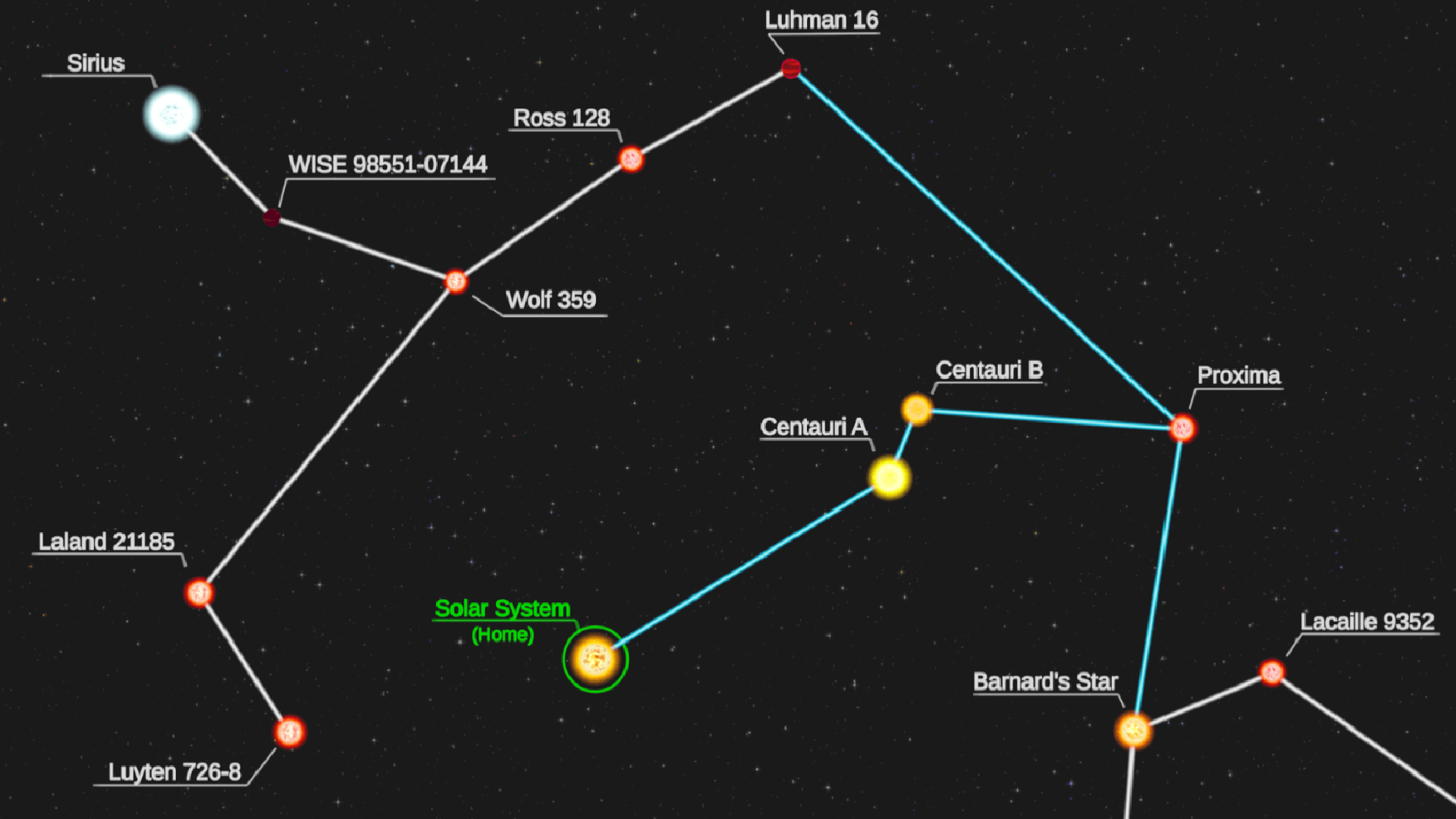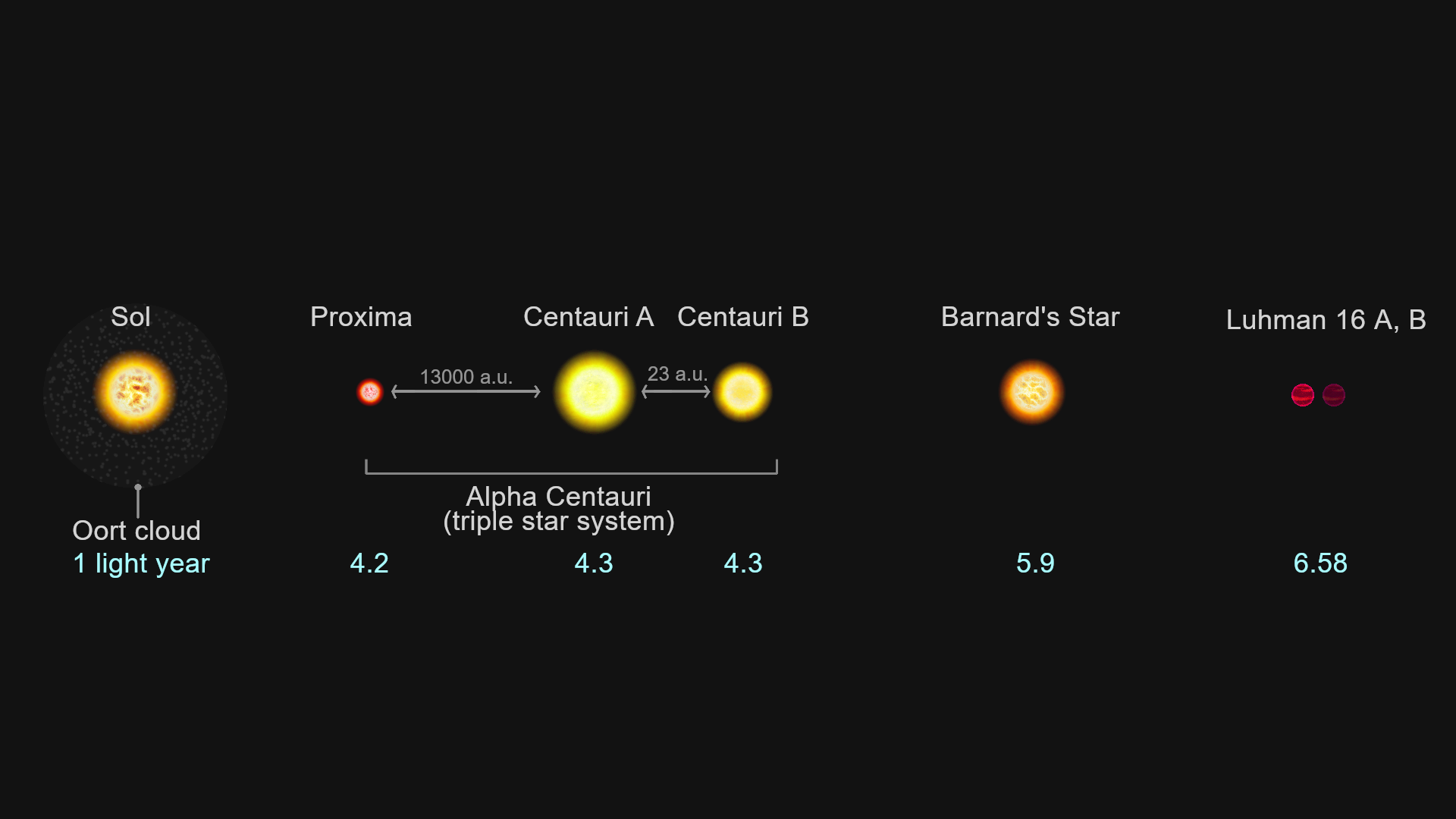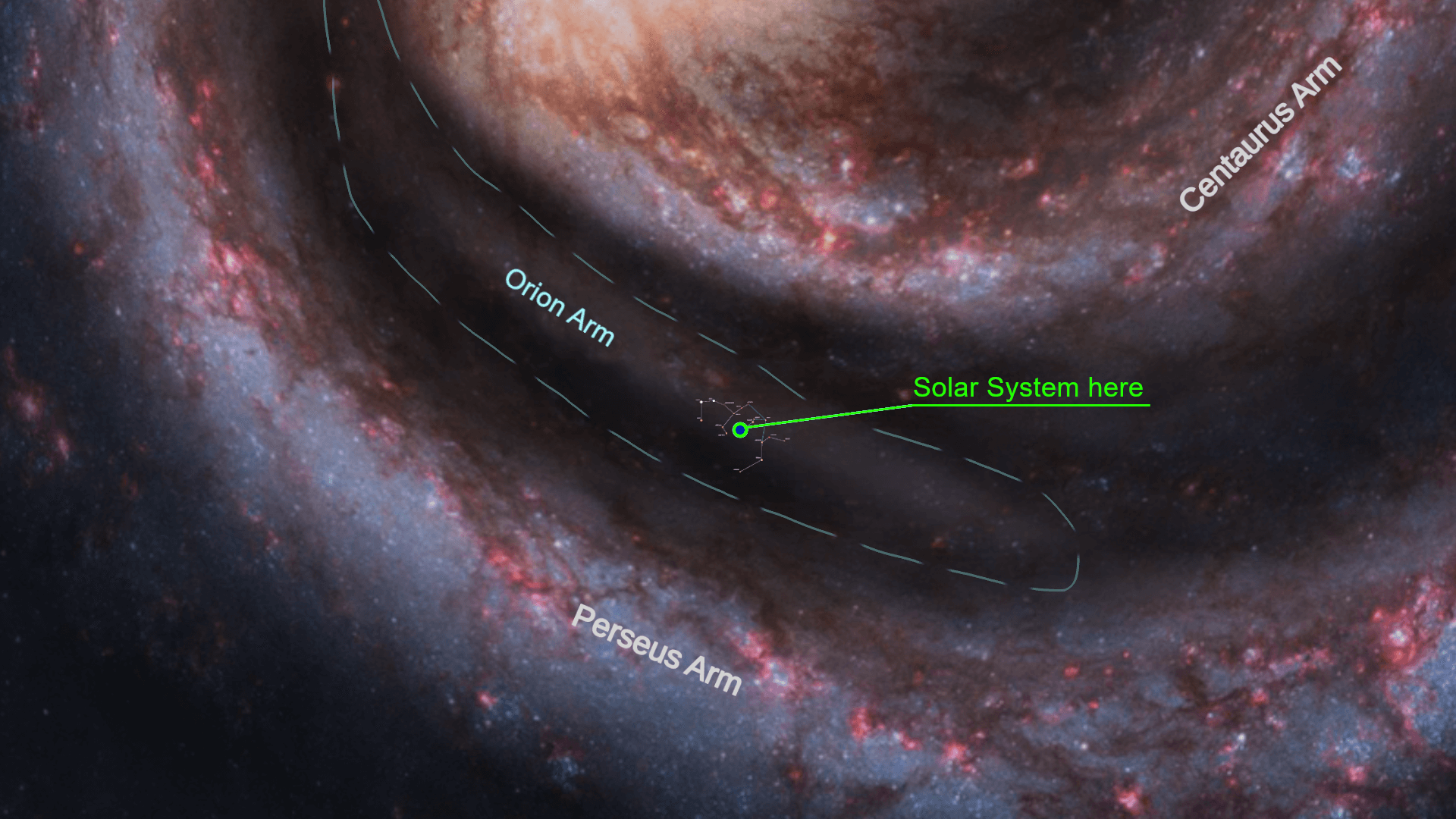The solar system and neighboring stars (radius 10 light years). Projection from above.
The number of stars filling the galaxy is just enormous. At night, we can see a maximum 2 thousand stars, although there are 400 billion of them in the galaxy! Consider the nearest celestial bodies within a radius of 16 light years. There are 57 star systems in this zone. Some of them are not single stars, but double and triple stars, so the total number of celestial bodies reaches 64. Also included are 13 brown dwarfs.
The closest neighbors
The closest star to the Sun is Proxima Centauri. The distance to it is 4.2 light years. This is a red dwarf, its mass and diameter does not exceed 10% of the solar. Proxima is a very "cold" star, the temperature is only 2700°C (the Sun has 5500°C), it emits little light and therefore it is not visible to the naked eye (0.0005 of the Sun's luminosity). It was opened in 1915. Despite the seemingly a "weak" of this star, it sometimes behaves like a real monster - the fact is that, like many other red dwarfs, Proxima Centauri is a flaring variable star. During flares, its luminosity can increase many times over and exceed the energy of solar flares by 10 times! The radiation from such a flare, which will irrigate the planets of this star, will be lethal.
Proxima Centauri belongs to the Alpha Centauri triple system, which also has the stars Centauri A and Centauri B. Are you already sick of these tautologies and oddities of astronomical names? :)
To put it simply, stars Centauri A and Centauri B are two cool and interesting stars that are very similar to our sun, they orbit very close to each other, at a distance of 29 AU. It is as if in our Solar System instead of the Sun there would be Centauri A and instead of Neptune there would be Centauri B. Proxima, is included in this star system, although it is distant from Centaurus A, B by 13000 AU. !
So, first fly to Proxima and from there already to Centauri A, B. Although in the game Spaceship Commander humanity first visited Centauri A, B (due to their potentially favorable conditions) and only then to Proxima (well, what to do near it ?) Although it has one confirmed planet (and 2 unconfirmed), its name is Proxima Centauri b. But I thought that this is not a very cool name and in the game Spaceship Commander it is called Rilotetu.
An interesting fact: a modern Earth spacecraft that go to a journey to our nearest neighbor Proxima Centauri will need 70 thousand years to get to it. This is if you use modern chemical engines. About engines, by the way, there was already an article.
The next closest star is Barnard's Star. Its distance is 5.9 light years. It is a single star, it is also a red dwarf star, but brighter and more massive than Proxima. The mass and diameter is estimated at 20% of the Sun. Barnard's Star is often named to as "flying" because it has the highest rate of angular movement across the celestial sphere of any known star. For 174 years, the star moves along the celestial sphere by 0.5°. It approaches the Solar System at a speed of 100 km/s. The star has one confirmed planet.
The last nearest neighbor is the double substellar system Luhman 16. The distance to it is 6.58 light years. Why is it a substellar system? Because instead of normal stars, two brown dwarfs live here.
Brown dwarfs are substellar objects becouse they are somewhere between a planet (like Jupiter) and a star. Their masses in the range of approximately 0.01 to 0.07 solar masses. In the depths of these "planet stars" thermonuclear reactions can be launched as in ordinary stars, but the power of these reactions is insufficient and they cannot reach a constant luminosity.
Despite their small mass (by the standards of stars), thermonuclear reactions can still occur in brown dwarfs, although this is achieved not due to the burning of hydrogen as in normal stars, but due to the burning of deuterium, which is quite small, and because of this brown dwarfs start to cool down quickly.
Due to the fact that brown dwarfs are difficult to detect, the first detections were as recently as 1995, although the theoretical justification for the existence of brown dwarfs appeared as early as 1963. Luhman 16 was opened only in 2013, due to its dullness. Brown dwarfs is detecing in the infrared spectrum, due to the large amount of heat released.
Where our Solar System in galaxy
So, there are interesting neighbors around the Sun that are definitely must a visit. Both in real life and in the game Spaceship Commander :)

